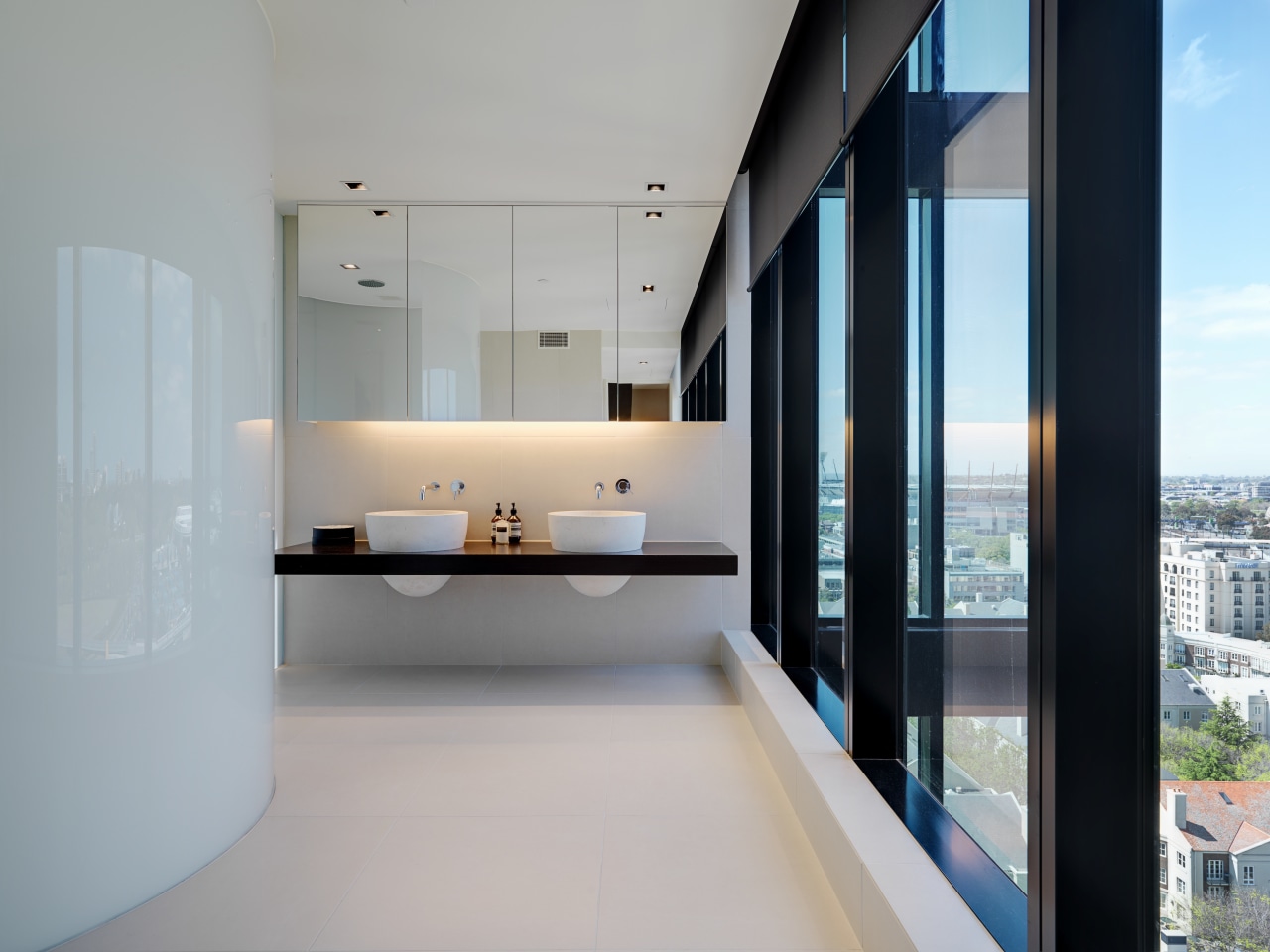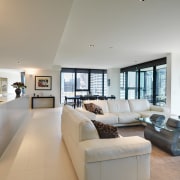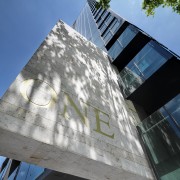Leading edge
Positioned on a key axis in the inner city, this landmark high-rise was designed to address an industrial-urban view to the southwest and a tree-lined park to the north

For centuries, some of the best inner-city land in our major cities has been given over to rail corridors and shunting yards. But many local governments are now recognising the potential of under-utilised railway land, with the result that key sites are being freed up for development.
The prominent Melbourne site featured on these pages is part of a large package of land Becton Property Group purchased from the Victorian Government in 1991. One East Melbourne, the company's latest signature development, is the final stage of its East Melbourne residential housing project.
Damian Dalgleish, Becton CEO of development and construction, says the company was conscious of the significance of the site on the edge of the city grid.
"There was never any doubt this was going to be an iconic sentinel building," he says. "The site, on Wellington Parade South, is within walking distance of the inner city, parks, the MCG and Melbourne Tennis Centre, and has extensive views in all directions. We wanted the building to make a strong architectural statement that would befit its prominent location."
Ashton Raggatt McDougall (ARM) was contracted to design the mixed-use development, which needed to include a range of apartment options and commercial office space. It was also designed to achieve a 5-Star ABGR and Green Star rating.
Project architect Sophie Cleland says the site is characterised by two distinct urban conditions the cityscape to the southwest and the leafy outlook to the Fitzroy and Treasury Gardens in the north.
To address both these elements, the 19-storey tower has two distinct forms each having its own design vocabulary. The south-facing tower has a folded, angular form that provides a distinct profile when seen from afar.
"This is a significant sculptural element," says Cleland. "The facade appears to simultaneously fold in on itself and reach out towards the city. In contrast, the north-facing side of the tower has a curved form that provides a softer edge that reflects the more natural contours of the adjacent park."
ARM director Ian McDougall says the architectural expression of these two forms determined the entire design programme.
"While the building is a singular structure, it has been articulated into its component parts. The design expresses the functional differences and also activates the street line and the overall views of the building in the round."
Cleland says one of the driving principles behind the design was the desire to achieve a small footprint.
"The concept of providing several small buildings linked together was more appealing that a single, monolithic mass," she says. "The building's cuts, angles, curves and folds help create this effect. The design avoids the need for a deep core, and it ensures natural light penetrates almost every room, including the bathrooms. Some of the apartments have a line of sight right through from the front to the back."
Winter gardens also maximise the natural light and enable the folded quality of the southwest facade to be fully exposed.
Near street level, a row of apartment and studio units appear framed in four-by-four squares that front the Cliven Close streetscape.

"The Wellington Parade South streetscape is a compressed version of the curtainwall facade, which creates a local relationship to the surrounding residential environment," says Cleland.
Cleland says a series of balconies on the upper level mimic the curve of the north-facing tower, bringing a sense of domesticity to this elevation.
A six-level commercial building providing 5000m² of office space wraps around the bottom of the west face of the building. This part of the building has a completely separate identity, says Cleland. While the residential tower has a glazed curtainwall, visually this structure has a more grounded, solid facade.
The top of the office building is a landscaped rooftop podium, designed to provide a breakout space for commercial tenants. Designed by Formium Landscape Architects, the patterned paving and landscaping provides tower residents and occupants of other buildings with a more interesting view from above. Rainwater is harvested to irrigate the podium.
Other sustainable design initiatives in One East Melbourne include high-performance glazing, passive and active chilled beam air conditioning, energy-efficient lighting fixtures, solar panels and water-saving fixtures. There are also operable windows to allow natural ventilation.
The apartment interiors were designed by renowned London minimalist architect Claudio Silvestrin, in collaboration with Melbourne firm Carr Design. Silvestrin designed clean, uncluttered living spaces that create a sense of sanctuary.
Apartment interiors contain classic Silvestrin touches, including circular showers encased in floor-to-ceiling glass, ample use of porcelain tile, bluestone and leather panel walls. The winter gardens feature retracting sliding panel doors that allow an indoor-outdoor lifestyle.
Credit list
Developer
Interior designer â apartments
Civil engineer
Quantity surveyor
Main contractor
Security system
Graphic design
Facade design
Lifts
Blinds
Carpet
Lighting
Architect
Landscape architect
Mechanical and electrical engineer
Fire consultant
Earthworks
Signage
Roofing
Facade construction
Hardware
Reception furniture
Paints
Bathroomware
Story by: Colleen Hawkes
Home kitchen bathroom commercial design
Personality plus
Diving into nature
Classic looks, contemporary efficiency














